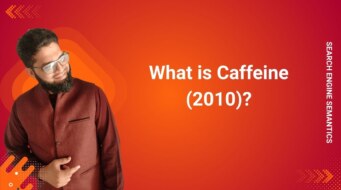What is Top Heavy?
Top Heavy refers to a webpage layout that is overloaded with ads, banners, or large media at the top, causing the main content to be pushed far down the page. This design can negatively impact both user experience and SEO performance.
Top-heavy layouts are considered problematic because they frustrate users and can lead to penalties from search engines like Google for poor user experience and excessive ad placements.
Key Characteristics of a Top-Heavy Page
1. Excessive Ads or Media
The webpage may feature large banners, pop-ups, or media elements that dominate the above-the-fold area (the part of the page visible without scrolling).
Ads, banners, and videos may overwhelm users, who are looking for content rather than distractions.
2. Main Content Not Immediately Visible
Because ads and other media take up most of the visible space, the main content is often pushed far down, requiring users to scroll to find the information they need.
This can significantly increase bounce rates as users may leave the page quickly due to frustration.
3. Impact on Mobile Devices
Top-heavy layouts are even more problematic on mobile devices, where screen space is limited. The imbalance between ads and content can disrupt the mobile browsing experience.
Why “Top Heavy” is a Problem for SEO?
1. Poor User Experience
- Users expect to see valuable content immediately when they land on a page. If ads or irrelevant media dominate the page, it can annoy users and result in high bounce rates.
- Search engines prioritize user experience, and pages with excessive ads or slow loading times are penalized by algorithms.
2. Search Engine Penalties
- Google’s Page Layout Algorithm specifically targets top-heavy pages. Sites with poor layout practices, such as too many intrusive ads or banners, may be penalized, resulting in lower search rankings.
- Google may de-index pages or reduce their rankings in SERPs if the content is hidden behind too many ads.
3. Problematic for Mobile Browsing
Top-heavy layouts can make mobile browsing a hassle. The limited screen space on mobile devices makes it difficult for users to see content and easily navigate the page, which increases bounce rates.
How to Identify a Top-Heavy Page?
1. Examine the Above-the-Fold Area
Check if ads or media dominate the top portion of the page before the user needs to scroll. The main content should be immediately visible.
2. Analyze Page Layout
Ensure that the primary content of the page isn’t hidden beneath large media or pop-ups. Use tools like Google PageSpeed Insights to check if your page layout is balanced and not top-heavy.
3. Use Heatmaps
Platforms like Hotjar or Crazy Egg can help you see how users interact with your page. Heatmaps show where users click and how far they scroll down, giving insight into layout effectiveness.
Example: Top-Heavy vs. Balanced Layout
Top-Heavy Layout Example:
Imagine a page with:
Three large banner ads
Pop-ups that cover part of the content
Auto-playing video that loads at the top
In this scenario, the user has to scroll down past all the distractions to find the relevant content. This annoys users and likely leads to higher bounce rates.
Balanced Layout Example:
A well-structured page will have:
A single small banner ad at the top
Clear headlines and content displayed immediately
Minimal distractions, with the main content front and center
Here, users can engage with the content quickly and easily, leading to lower bounce rates and better user experience.
Final Thoughts on Top Heavy
Maintaining a balanced page layout that prioritizes content over ads is essential for a good user experience and better SEO rankings. You can reduce bounce rates, improve engagement, and maintain strong rankings in search results, by avoiding top-heavy layouts, improving site usability, and focusing on quality content.
You align both with Google’s SEO guidelines and create a positive user experience that benefits your site in the long run, by offering users what they need without distractions.
Want to Go Deeper into SEO?
Explore more from my SEO knowledge base:
▪️ SEO & Content Marketing Hub — Learn how content builds authority and visibility
▪️ Search Engine Semantics Hub — A resource on entities, meaning, and search intent
▪️ Join My SEO Academy — Step-by-step guidance for beginners to advanced learners
Whether you’re learning, growing, or scaling, you’ll find everything you need to build real SEO skills.
Feeling stuck with your SEO strategy?
If you’re unclear on next steps, I’m offering a free one-on-one audit session to help and let’s get you moving forward.



